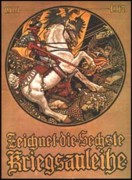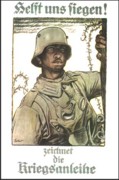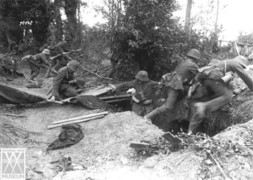In
1914 Germany was recognised as having the most efficient army in the
world. Its structure included universal mass conscription
for short-term military service followed by a longer period in reserve.
The German Army placed great emphasis on high quality training and
maintaining a large number of experienced senior officers.
Planning and operational control was conducted by the General
Staff. The Kaiser Wilhelm
II was the official Commander-in-Chief, but the Army chief of staff,
Helmuth von
Moltke was the effective leader in the field. Moltke was
followed in this post by Erich von
Falkenhayn (1914-16) and Paul von
Hindenburg (1916-18).
The German Army in 1914 comprised 25
corps (700,000 men). There were eight army commands and a further ten
were created during the war. A cavalry
regiment and other support forces were attached to each 2 divisions.
Within a week of war being declared, the reserves had been
called up and some 3.8 million men were in the German Army. By August
1916, about 2.85 soldiers were serving on the Western
Front with another 1.7 million on the Eastern
Front.
When the First World War
came to an end in November 1918, the German Army had suffered an
estimated 5 million casualties, including 1.75 dead. After the war the
Treaty
of Versailles restricted the German Army to 100,000 men.



Created on ... août 20, 2003